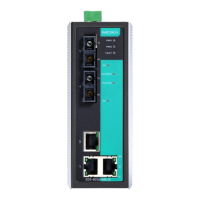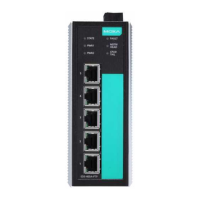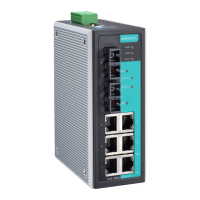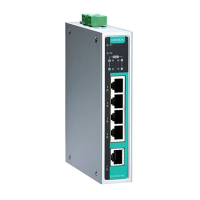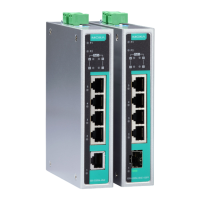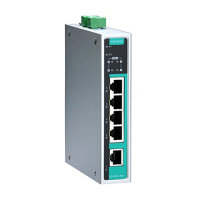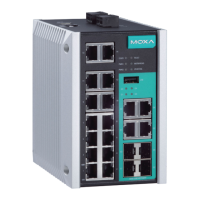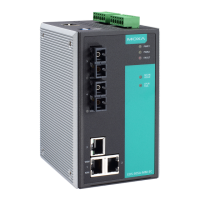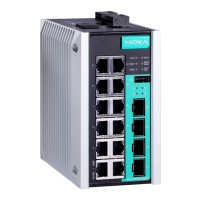- 16 -
Auto MDI/MDI-X Connection
The Auto MDI/MDI-X function allows users to connect the EDS-
405A/408A’s 10/100BaseTX ports to any kind of Ethernet device,
without needing to pay attention to the type of Ethernet cable being
used for the connection. This means that you can use either a straight-
through cable or cross-over cable to connect the EDS-405A/408A to
Ethernet devices.
Specifications
IEEE802.3, 802.3u, 802.3x, 802.1D, 802.1Q,
802.1w, 802.1p
IGMP V1/V2 device, GMRP, GVRP, SNMPv1/v2c/v3,
DHCP Server/Client, TFTP, SNTP, SMTP, RARP,
RMON, HTTP, Telne t, Syslog, DHCP Option
66/67/82, BootP, LLDP, Modbus TCP, IPv6
MIB-II, Ethernet-Like MIB, P-BRIDGE MIB, RMON
MIB Group 1, 2, 3, 9, Bridge MIB, RSTP MIB
Forwarding and
Filtering Rate
IEEE802.3x flow control, back pressure flow control
10/100BaseT(X) auto negotiation speed, F/H
duplex mode, and auto MDI/MDI-X connection
100BaseFX ports (SC/ST connector)
PWR1, PWR2, FAULT, 10/100M (TP po rt),
100M (Fiber Port), CPLR/TAIL and MSTR/HEAD
One relay output with current carrying capacity of
1A @ 24 VDC
Master, Coupler, Turbo Ring, Reserve
Fiber Cable Type OM1
G.652
Wave-
length
Optical
Powe r
RX Range (dBm ) -3 to -32 -3 to -34
Dispe rsion Pe n alty (dB)
3 1
Note: When connecting a single-
mode fiber transceiver, we recommend
using an attenuator to prevent damage caused by excessive optical
p o w e r.
Compute the “typical distance” of a specific fiber transceiver as follows:
Link budget (dB) > dispersion penalty (dB) + total link loss (dB).
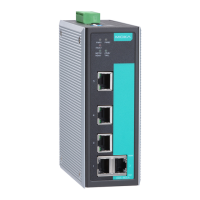
